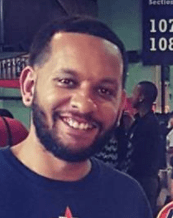Medicare Savings Program: How To Receive Help Paying For Monthly Medicare Premiums
In this article, we will talk about various Medicare Savings Programs (MSP) and how these programs can help individuals with the costs of Medicare premiums.
How the Medicare Savings Program Can Help You
These programs offer low-income Medicare beneficiaries assistance in paying for Medicare Part A and Part B premiums. If an individual’s income is low enough these programs can even pay the full premiums.
Medicare beneficiaries who also have Medicaid should pay close attention to those programs because it is one of the qualifications for 3 of the 4 Medicare Savings Programs.
What is the Medicare Savings Program?
Medicare Savings Programs offer help to low-income seniors by paying for Medicare expenses like premiums, deductibles, coinsurance, and copayments.
These are state programs which means you have to apply through your state’s Health and Human Services Commission. Through the MSP, your Medicare Part A and B premiums are paid with state funding which is why you must apply through the Health and Human Services Commission for your state. Applying for the program is typically done through a local Medicaid or Area Agency on Aging office near you.
Editor’s Note: For those in Texas you will contact the Texas Health and Human Services to learn more about Medicare Savings Programs.
4 Medicare Savings Programs
There are 4 Medicare Savings Programs. Each program helps you with the costs of either Part A or Part B expenses. I will point out the differences between each MSP below.
Editor’s Note: The income and asset limits will vary for each state’s MSP. To learn more about your state’s limits you can call your local Medicaid office.
Qualified Medicare Beneficiary (QMB) Program
The Qualified Medicare Beneficiary Program (QMB) is the most generous of the Medicare Savings Programs because it helps you pay for Part A and B premiums, deductibles, coinsurance, and copayments.
The 2020 income limits for the QMB program are:
- $1,084 for individuals
- $1,457 for married couples
The current resource limit is:
- $7,860 for individuals
- $11,800 for married couples
Editor’s Note: Assets are things like checking accounts, stocks, bonds, mutual funds, retirement accounts, and real estate. Resources that will not be counted include: your primary home, one car, burial funds under $1500, burial plots, life insurance with cash value less than $1500, household goods, and wedding rings
Specified Low-Income Medicare Beneficiary (SLMB) Program
This MSP will help you pay for Part B premiums if you have Part A and limited income/resources.
The 2020 income limits for the SLMB Program are:
- $1,296 for individuals
- $1,744 for married couples
The SLMB resource limits are:
- $7,860 for individuals
- $11,800 if you are married
Qualifying Individual (QI) Program
Like the SLMB program, the Qualifying Individual Program will pay for your Part B premiums. The difference between the two is:
- The income limit for the QI is slightly higher than the SLMB
- You must apply for this program every year and it is the first-come, first-serve basis
- You do not qualify for the QI Program if you receive Medicaid
The 2020 income limits for the Qualifying Individual Program are:
- $1,456 for individuals
- $1,960 for married couples
Resource limits are:
- $7,860 for individuals
- $11,800 for married couples
Editor’s Note: If you qualify for the QMB, SLMB or QI Programs you automatically qualify for the Extra Help Program which covers the cost of prescription drugs.
Qualified Disabled and Working Individuals (QDWI) Program
Lastly, the QDWI Program will help you pay for Medicare Part A premiums if you are disabled, working, and under 65 years old.
If any of the following situations apply to your situation, you could qualify for the QDWI Program:
- Younger than 65, disabled and working
- Lost your premium-free Part A when you returned to work
- Receive no medical assistance from your state
- Fall under the income/resource limits for your state
Speaking of income limits here are the 2020 numbers that you cannot exceed
- $4,339 for individuals
- $5,833 for married couples
Resources limits for the Qualified Disabled and Working Individuals Program are:
- $4,000 for individuals
- $6,000 for married couples
Who Qualifies for a Medicare Savings Program?
If all 3 of these situations apply to you then you are encouraged to apply for a Medicare Savings Program.
- You have Medicare Part A or you’re at least eligible
- Your income/resources are below the maximum limits
- You have both Medicare and Medicaid
Again, if your income or resources are slightly higher than what is listed you can still contact your local Medicaid office to apply.
How Do I Apply for a Medicare Savings Program?
To apply for a Medicare Savings Program you can start at either:
- Your local Medicaid office.
- A local Area Agency on Aging office
Your state’s Health and Human Services Department manages the MSP and the local Medicaid and Area Agency on Aging offices in your area can help you start the application process.
If you are in the Houston area you can start with Houston Medicaid offices or the Harris County Area Agency on Aging (832.393.4301) to find help applying.
Conclusion
If you are a low-income senior the Medicare Savings Program can help you to pay many of the costs of Medicare Parts A and B.
Earlier we went over the qualifications for the MSP. Even if your income or resources are slightly above the limits you are encouraged to apply anyway. The limits can increase from year to year therefore you could still qualify.
To apply for a Medicare Savings Program you can start the process by visiting your local Medicaid office or an Area Agency on Aging program.
Similar Articles That May Be Of Interest To You:
Nick Bryant is the author of Understanding Healthcare Is Half The Battle and a Senior Counselor with 13+ years of experience working in community health and mental health. He enjoys spending time with his family, watching WWE on Friday nights, and working toward a Google Data Analytics certification. If you have additional questions about community resources or government assistance programs, simply leave a comment below and he will follow up as soon as possible.




